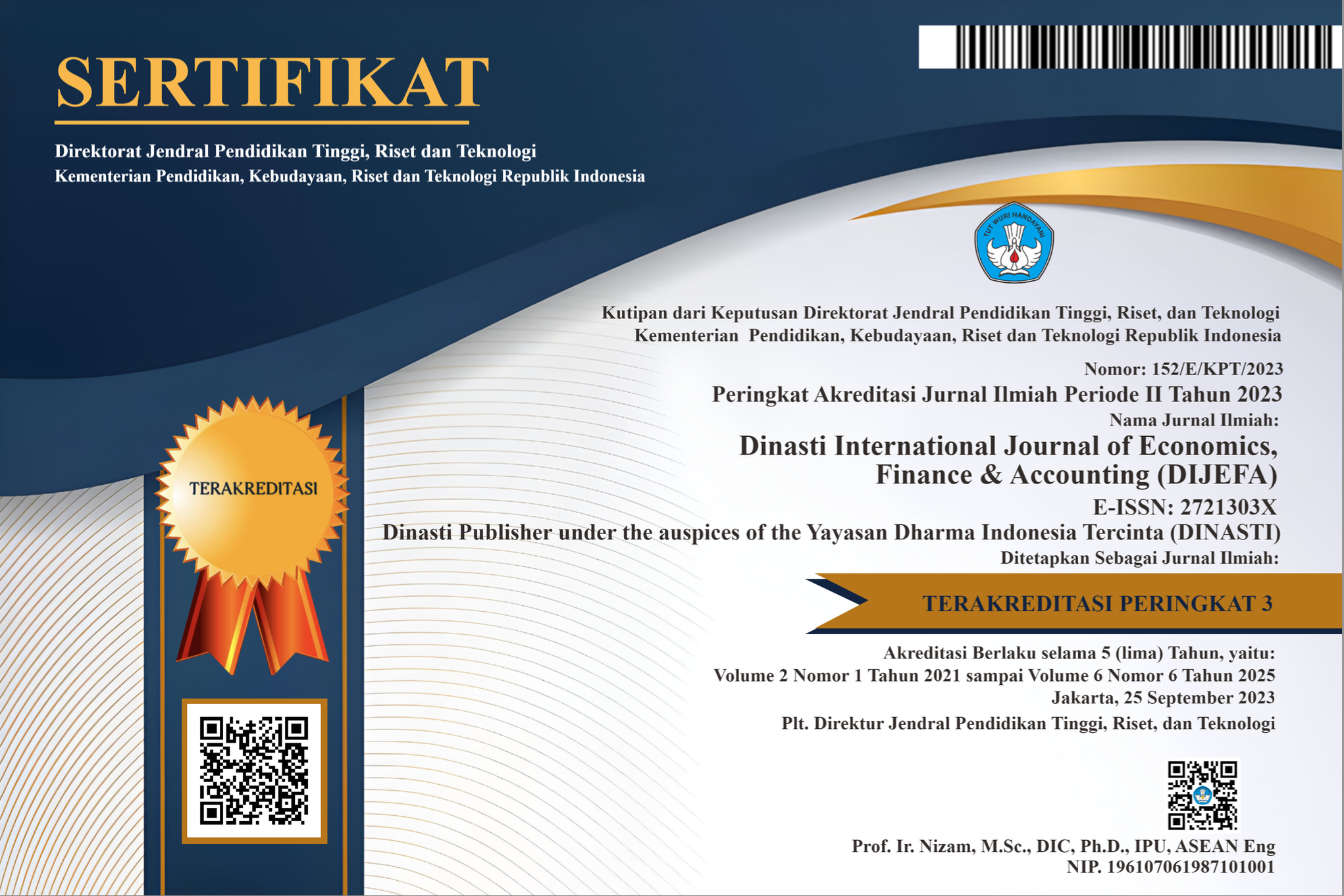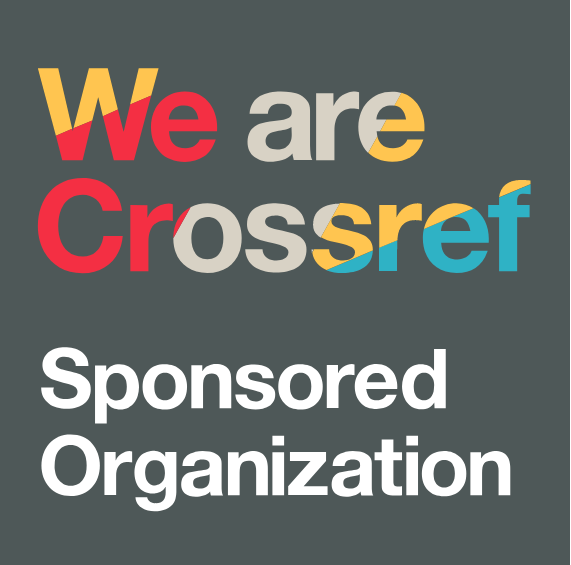The Role of Trust and Financial Literacy on Intention to Use Services Buy-Now-Pay-Later with Approach Extended Theory of Planned Behavior Model
DOI:
https://doi.org/10.38035/dijefa.v6i3.4704Keywords:
Buy Now Pay Later, Intention To Use, TPB, Trust, Privacy ConcernAbstract
The Buy Now Pay Later (BNPL) service is a fintech innovation that allows consumers to purchase with delayed payments. Its popularity is increasing with the growth of e-commerce and the need for flexible payments, but understanding the factors that influence usage intentions remains limited. This research analyzes the influence of trust and financial literacy on intentions to use BNPL in Indonesia using an approach to the Extended Theory of Planned Behavior. The study was conducted quantitatively on 405 respondents and analyzed using Partial Least Squares-Structural Equation Modeling (PLS-SEM), including Multigroup Analysis (MGA) based on gender and financial literacy level. The results show that trust significantly affects attitudes and intentions to use BNPL. In contrast, financial literacy does not directly impact intentions but influences attitudes, beliefs, and perceived behavioral control. Multigroup analysis shows that subjective norms are more influential on women's intentions, and privacy concern influences attitudes more in individuals with low financial literacy. These findings emphasize the importance of building trust and increasing financial literacy to encourage the wise use of BNPL. Practical implications are aimed at industry players and regulators in designing educational strategies and consumer protection policies.
References
Ajzen, I. (1991). The theory of planned behavior. Organizational Behavior and Human Decision Processes, 50(2), 179–211. https://doi.org/10.1016/0749-5978(91)90020-T
Ajzen, I. (2020). The theory of planned behavior: Frequently asked questions. Human Behavior and Emerging Technologies, 2(4), 314–324. https://doi.org/10.1002/hbe2.195
BAKER, H. (2007). The “Backroom Boys” of Hong Kong Anthropology: Fieldworkers and Their Friends. Asian Anthropology, 6(1). https://doi.org/10.1080/1683478x.2007.10552567
Gefen, D. (2000). E-commerce: The role of familiarity and trust. Omega, 28(6). https://doi.org/10.1016/S0305-0483(00)00021-9
Guttman-Kenney, B., Firth, C., & Gathergood, J. (2023). Buy now, pay later (BNPL) …on your credit card. Journal of Behavioral and Experimental Finance, 37. https://doi.org/10.1016/j.jbef.2023.100788
Hair, J. F., Black, W. C., Babin, B. J., & Anderson, R. E. (2019a). Multivariate data analysis . Cengage Learning. Hampshire, United Kingdom.
Hair, J. F., Black, W. C., Babin, B. J., & Anderson, R. E. (2019b). Multivariate data analysis (8. Bask?). Eight Edition, Cengage: Learning EMEA.
Hasan, M. M., Yajuan, L., & Mahmud, A. (2020). Regional Development of China’s Inclusive Finance Through Financial Technology. SAGE Open, 10(1). https://doi.org/10.1177/2158244019901252
Jing, P., Huang, H., Ran, B., Zhan, F., & Shi, Y. (2019). Exploring the factors affecting mode choice intention of autonomous vehicle based on an extended theory of planned behavior-A case study in China. Sustainability (Switzerland), 11(4). https://doi.org/10.3390/su11041155
Klapper, L., & Panos, G. A. (2011). Financial literacy and retirement planning: The Russian case. Journal of Pension Economics and Finance, 10(4). https://doi.org/10.1017/S1474747211000503
Lusardi, A. (2015). Financial literacy: Do people know the ABCs of finance? Public Understanding of Science, 24(3), 260–271. https://doi.org/10.1177/0963662514564516
Malhotra, N. (2019). Marketing Research: An Applied Orientation, Global Edition, 7th Edition. Marketing Research.
Morgan, P. J., & Trinh, L. Q. (2020). FinTech and Financial Literacy in Vietnam. ADBI Working Paper Series (No.1154), 1154.
Nor Othman, M., Zhao, W., Nor Othman Wenjie, M., & Nor, M. (2010). The Influence of Knowledge of Consumer Protection and Perception of Marketing Factors on Consumer Complaint Behaviour: A Study of Malaysian Consumers. Papers.Ssrn.Com, September.
Oh, K., & Abraham, L. (2016). Effect of knowledge on decision making in the context of organic cotton clothing. International Journal of Consumer Studies, 40(1). https://doi.org/10.1111/ijcs.12214
Penney, E. K., Agyei, J., Boadi, E. K., Abrokwah, E., & Ofori-Boafo, R. (2021). Understanding Factors That Influence Consumer Intention to Use Mobile Money Services: An Application of UTAUT2 With Perceived Risk and Trust. SAGE Open, 11(3). https://doi.org/10.1177/21582440211023188
Raj, V. A., Jasrotia, S. S., & Rai, S. S. (2023). Role of Privacy Concerns and Trust in Consumers’ Intention to Use Buy-Now, Pay-Later (BNPL): An Extended TPB Model. International Journal of Human-Computer Interaction. https://doi.org/10.1080/10447318.2023.2269005
Rhodes, R. E., & Courneya, K. S. (2005). Threshold assessment of attitude, subjective norm, and perceived behavioral control for predicting exercise intention and behavior. Psychology of Sport and Exercise, 6(3). https://doi.org/10.1016/j.psychsport.2004.04.002
Schepers, J., & Wetzels, M. (2007). A meta-analysis of the technology acceptance model: Investigating subjective norm and moderation effects. Information and Management, 44(1). https://doi.org/10.1016/j.im.2006.10.007
Tian, Y., Chan, T. J., Suki, N. M., & Kasim, M. A. (2023). Moderating Role of Perceived Trust and Perceived Service Quality on Consumers’ Use Behavior of Alipay e-wallet System: The Perspectives of Technology Acceptance Model and Theory of Planned Behavior. Human Behavior and Emerging Technologies, 2023. https://doi.org/10.1155/2023/5276406
Topimin, S., Rahayu, S., & Hashim, M. (2020). The Financial Literacy of Micro Business Entrepreneurs in Sabah. In Asian Journal of Entrepreneurship (Vol. 1, Issue 4).
Venkatesh, V., & Davis, F. D. (2000). Theoretical extension of the Technology Acceptance Model: Four longitudinal field studies. Management Science, 46(2). https://doi.org/10.1287/mnsc.46.2.186.11926
Wang, Y., Genc, E., & Peng, G. (2020). Aiming the Mobile Targets in a Cross-Cultural Context: Effects of Trust, Privacy Concerns, and Attitude. International Journal of Human-Computer Interaction, 36(3). https://doi.org/10.1080/10447318.2019.1625571
Wong, G. Z., Wong, K. H., Lau, T. C., Lee, J. H., & Kok, Y. H. (2024). Study of intention to use renewable energy technology in Malaysia using TAM and TPB. Renewable Energy, 221. https://doi.org/10.1016/j.renene.2023.119787
Yang, H., Lee, H., & Zo, H. (2017). User acceptance of smart home services: An extension of the theory of planned behavior. Industrial Management and Data Systems, 117(1). https://doi.org/10.1108/IMDS-01-2016-0017
Downloads
Published
How to Cite
Issue
Section
License
Copyright (c) 2025 Bernadette Florencia Irena, Anna Amalyah Agus

This work is licensed under a Creative Commons Attribution 4.0 International License.
Authors who publish their manuscripts in this journal agree to the following conditions:
- The copyright on each article belongs to the author(s).
- The author acknowledges that the Dinasti International Journal of Economics, Finance & Accounting (DIJEFA) has the right to be the first to publish with a Creative Commons Attribution 4.0 International license (Attribution 4.0 International (CC BY 4.0).
- Authors can submit articles separately, arrange for the non-exclusive distribution of manuscripts that have been published in this journal into other versions (e.g., sent to the author's institutional repository, publication into books, etc.), by acknowledging that the manuscript has been published for the first time in the Dinasti International Journal of Economics, Finance & Accounting (DIJEFA).


























































